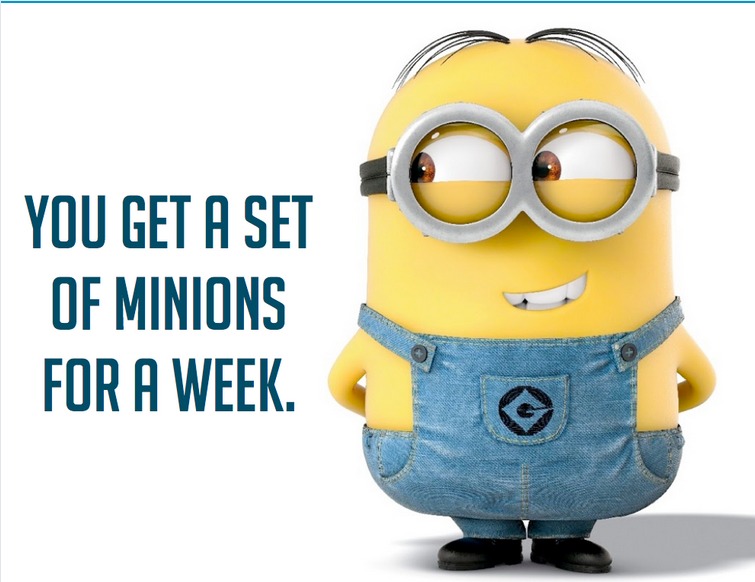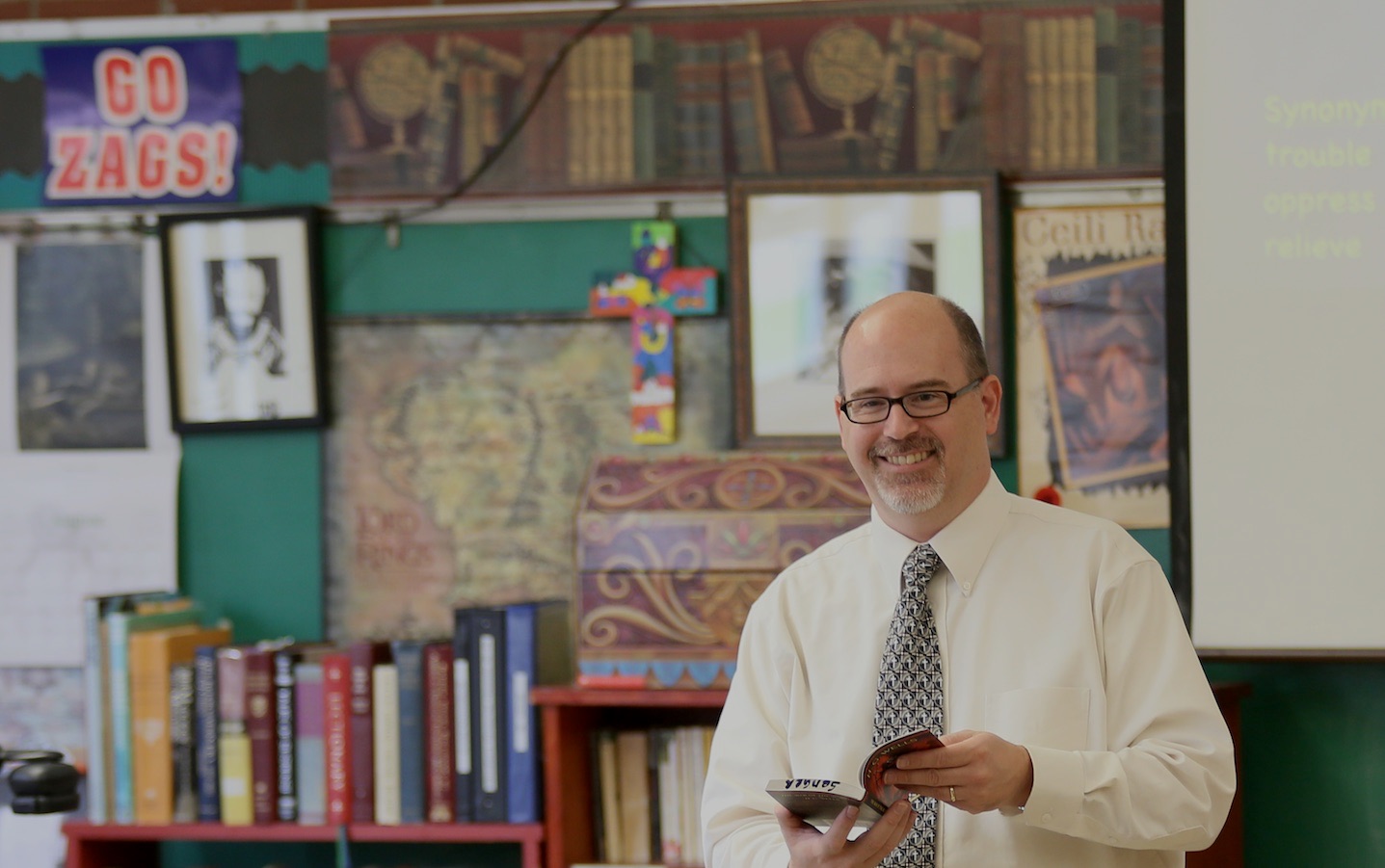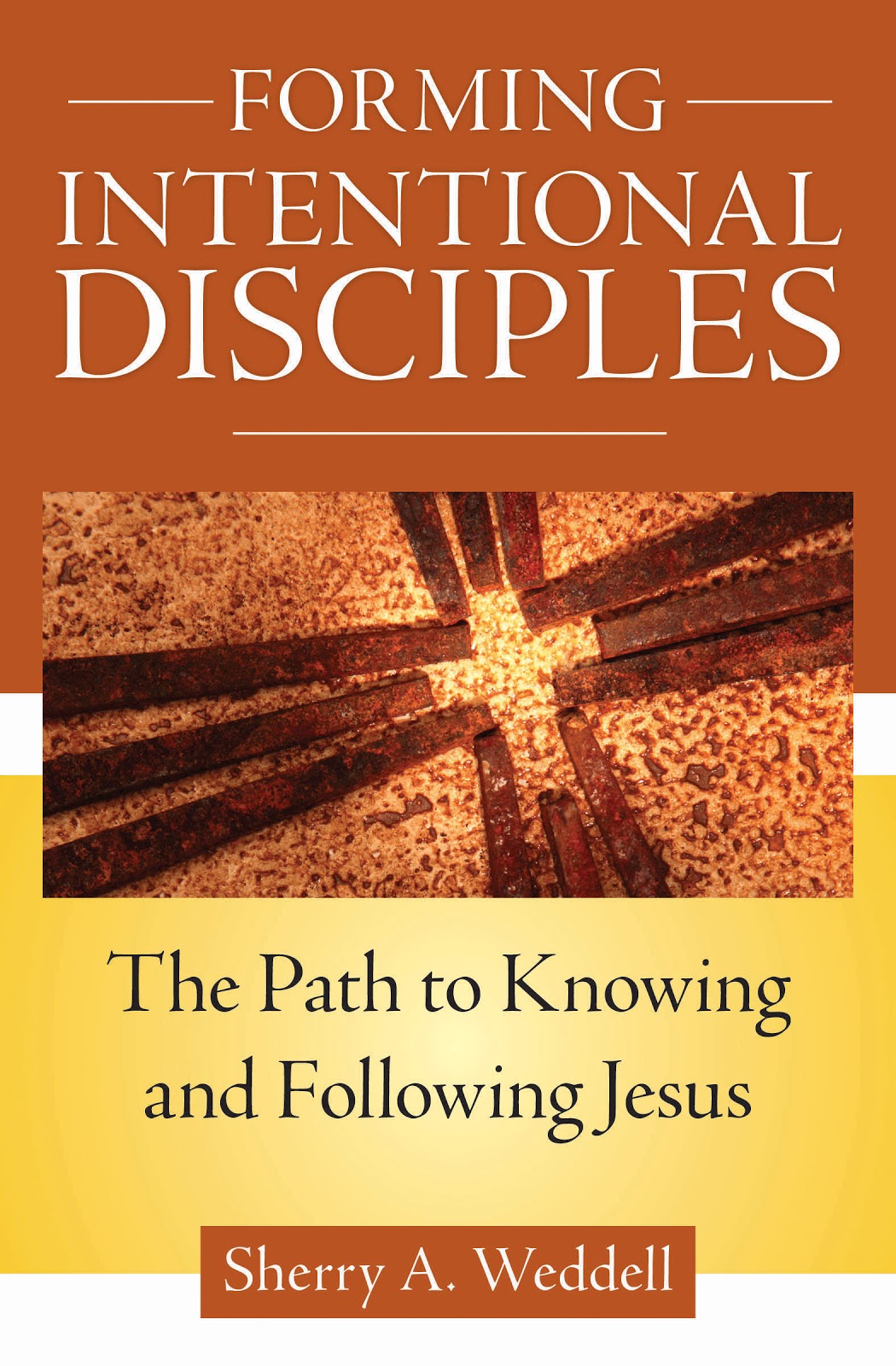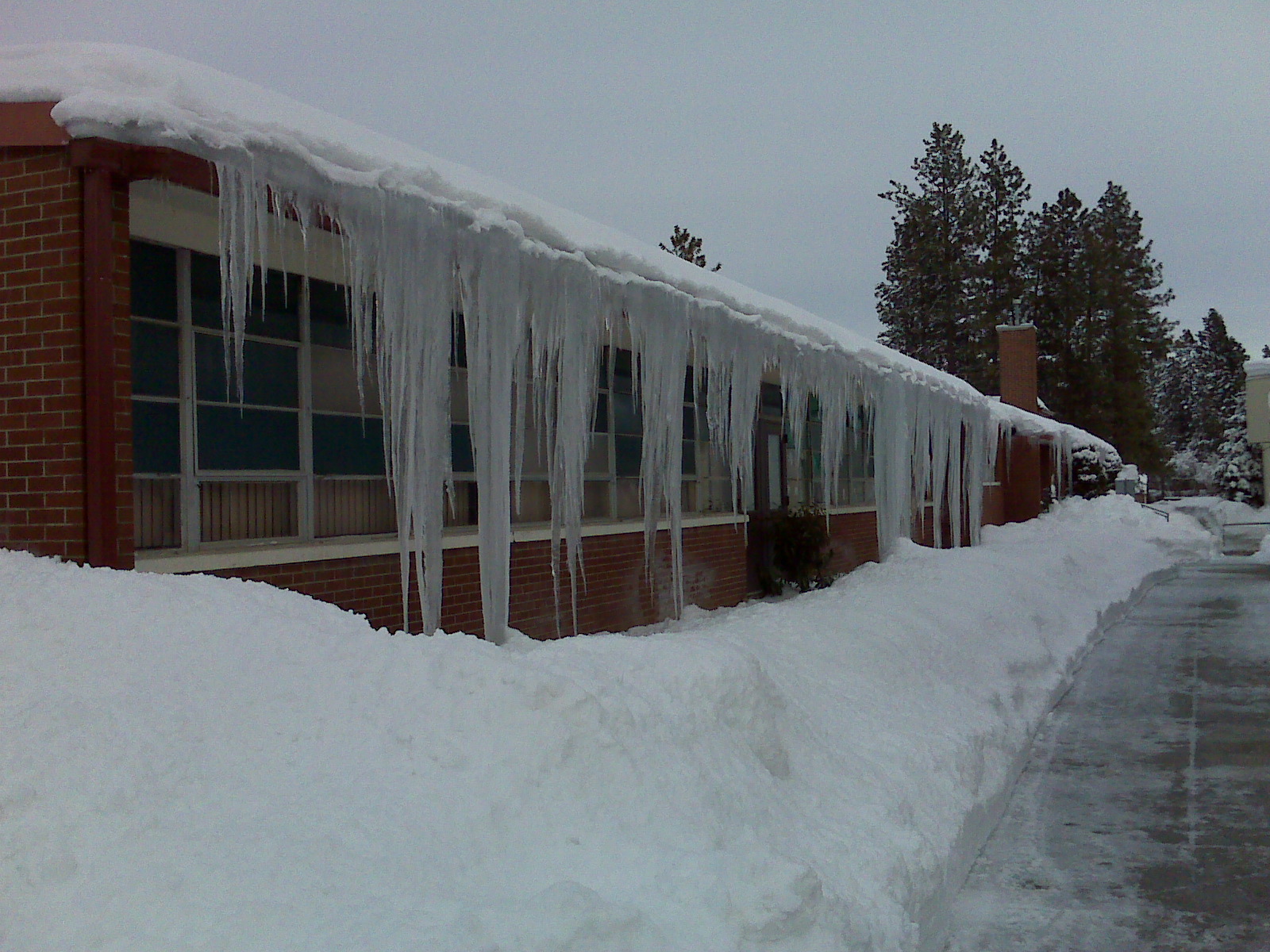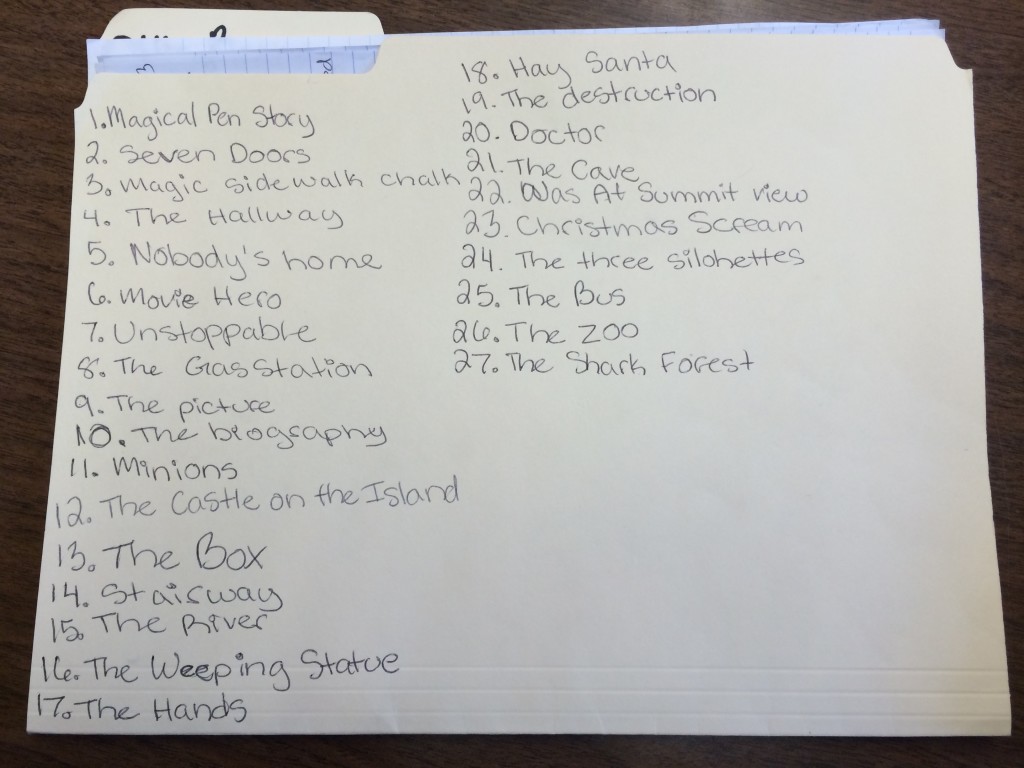Catholic School to Use Bitcoin Digital Currency for Fundraiser
From Huntsville, Alabama:
Holy Spirit Regional Catholic School is offering supporters a high-tech way to buy tickets to its biggest fundraiser.
The private school on Airport Road says reservations and donations to the Jan. 25 BASH (Building an Academic and Spiritual Heritage) event at the Von Braun Center can be made using Bitcoin, an increasingly popular digital currency.
“In a technologically savvy city, it only makes sense that the BASH embrace this new payment system and educate our parents and students through real-life experience,” BASH Chair Carlen Williams said in a news release.
Read more here.
NCEA Begins Book Club for Catholic Educators
The National Catholic Education Association is launching its book club with not one, but two outstanding titles for Catholic educators to discuss: Forming Intentional Disciples: The Path to Knowing and Following Jesus* by Sherry Weddell and Classroom Instruction that Works: Research-based Strategies for Increasing Student Achievement* by Robert Marzano.
According to Kathy Mears, Executive Director of Elementary Schools:
Our books have been selected and we hope that you will join us in our discussions. Pick one or do both discussions! It is easy to participate!
First, you must join Edmodo (www.edmodo.com), because that will be our platform. After you register, you can follow one of the following links or use one of the following codes.
If you are interested in knowing more about how to transfer our faith to future generations, please consider joining the group reading: Forming Intentional Disciples: The Path to Knowing and Following Jesus by Sherry Weddell. Through the reading of the book and the exchange of ideas, we believe that participants will grow stronger in their faith and their knowledge of how to share the faith, and meet other committed Catholic educators from all over the country! To register for this book study, please follow this link: https://edmo.do/j/u3vnpq. The code for this book is: 2fdna7.
If you would like to learn ways to implement the best practices outlined in Robert Marzano’s book, Classroom Instruction That Works: Research-Based Strategies for Increasing Student Achievement (2001), please consider registering for this book study! We will read, share pedagogical practices and learn new strategies from each other. To register for this book student, please follow this link: https://edmo.do/j/bk3n4k. The code for this book is: 2w2se8.
These book studies require you to read a little, share a little, and work together to build some common knowledge with your colleagues from across the country. Please consider joining us, as we begin to connect this way!
These two books are excellent choices to kick off the book club. I’ve read both of them, and I can’t wait to discuss them. I’ve already sent my request to join the Edmodo group, and I look forward to seeing you there!
*Ordering your books from this link helps support Catholic School Chronicle.
Teach Like a Time Lord: Lessons for Teachers from Doctor Who
Snow Days Obsolete at Illinois Catholic High School
Gibault Catholic High School in Waterloo, Illinois, is overcoming mother nature with technology. When snow closed the school for four days last week, Gibault’s electronic learning system enabled students to continue their work at home. See this report from KSDK.com for the full story:
Using Visual Writing Prompts in the Catholic Classroom
It’s tough to get eighth graders to settle down for Language Arts right after lunch, but one thing that’s been successful for me is the use of visual writing prompts. Here’s how it works:
Before students come in from the lunch room I project an interesting image on the screen, like this:
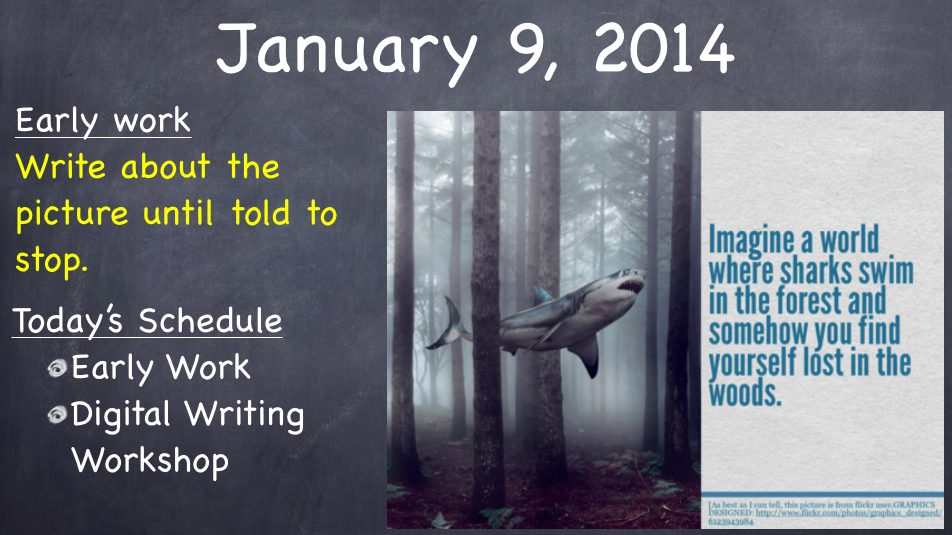
They enter the classroom, sit down, and begin a free write based on the image.
I usually have them write for ten to fifteen minutes with a goal of producing one full handwritten page. As they write I circulate around the room making sure everyone is on task, and I hand out their writing folders.
As with a typical free-write, they are to keep their pen moving constantly, and if they get stuck they are to write the last word they wrote over and over until they get unblocked.
After ten or fifteen minutes, I signal that the free write is over. On the front of their folder they number the free write and label it.
The class is currently in the middle of a Digital Writing Workshop in which they blog each day on Kidblog.org. Their full page of writing acts as a “ticket” which they exchange for getting a laptop out from the mobile cart. Since starting this in the middle of November, students have written almost thirty pages of free writes.
The main purpose of the free write is to get students writing fluently and to bypass their inner critic. The activity has two advantageous side effects: first, it helps to create a quiet, calm environment just after the busyness of lunch; second, it gives students lots of material to work with when trying to find something to blog about.
It’s pretty easy to find images to use–I usually just type “visual writing prompt” into Google’s image search–but there are a few websites that produce visual prompts regularly:
Often, while students are writing, I will play instrumental music in the background as another way to stimulate creativity. For instance, when I used the picture of the shark in the forest I played the theme from Jaws.
If you use visual prompts or would like to know more, I’d love to hear from you in the comments.
Here are some of the students’ favorites so far:
